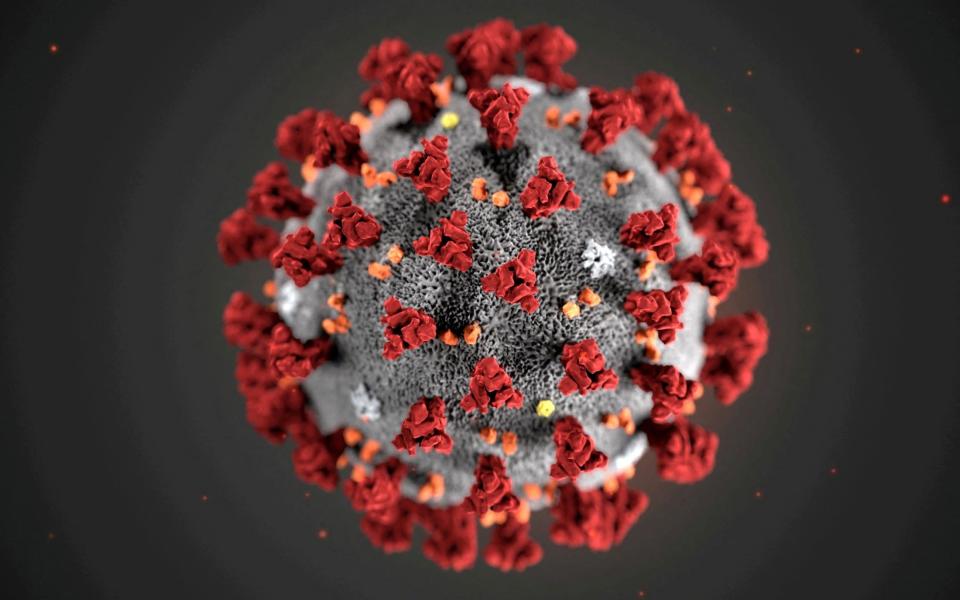Chinese scientists find ‘suspicious’ feature of coronavirus in the wild

A genetic feature of the Sars-CoV-2 which makes it so infectious, but has not previously been seen in other coronaviruses, has been identified in the wild by Chinese scientists for the first time.
Before the pandemic, a “furin cleavage site” had not been identified in a bat coronavirus, leading some to suggest that it had been artificially inserted in a lab.
Now scientists working for the Chinese Center for Disease Control have identified two betacoronaviruses – a class of virus found in bats and rodents – with furin cleavage sites and other genetic features similar to Sars-Cov-2.
Genetic sequencing was performed on the stomach contents of 112 bats collected from caves in Hainan Province, China between 30 March and 1 April 2021, according to a study published in Science Direct last week.
Two samples were found to have identical furin cleavage sites that resemble the corresponding sites of Sars-CoV-2. In addition, one of the samples – CoV CD35 – had a receptor-binding domain which was “highly similar” in structure to that of both Sars-CoV-1 and Sars-CoV-2.
“Bat CoV CD35 is so far the closest relatives of Sars-CoV-2 with a polybasic furin-like site, strongly suggesting that the cleavage site is of natural origin,” say the authors.
“In conclusion, this study deepens our understanding of the diversity of coronaviruses and provides clues about the natural origin of the furin cleavage site of SARS-CoV-2.”
New clues
The findings do not prove how Covid-19 jumped from bats to people, and the authors noted that the viruses are “distant relatives” of Sars-Cov-2 which belong to different betacoronavirus subgroups.
But Dr Linfa Wang, professor of emerging infectious diseases at Duke-NUS Medical School in Singapore who played a leading role in identifying bats as the natural host Sars viruses, said they are significant.
“Although the sequence identified is not identical to that in Sars-CoV-2, it is close enough to conclude that such sequences can exist naturally,” said Prof Wang, who was not involved in the research.
The study also noted that the bats which harbour these viruses – the great roundleaf bat and great Himalayan leaf-nosed bat – are commonly found across southern China, Myanmar, Thailand, Laos, Vietnam and Malaysia. The virus’s potential to spillover to humans “remains unknown and needs further investigation,” the researchers added.
Prof Jonathan Ball, a professor of virology at the University of Nottingham who was not involved in the study, said: “Possession of a potential furin-cleavage site is clearly not unique to Sars-CoV-2, and can be found in other species of coronaviruses, as this study confirms.
“Coronaviruses are adept at exchanging genetic material through a process we call recombination,” he told the Telegraph. “This is an effective way for the virus to gain potentially advantageous blocks of genetic material from other coronaviruses – genetic changes that enable it to acquire new behaviours, for example the potential to infect and transmit in new species.
“It should not surprise that Sars-CoV2 most likely arose following recombination between one or more ancestral sequences circulating in bats and probably another, unknown, intermediate host, one of which already possessed the furin cleavage site,” Prof Ball said.
While there is no conclusive evidence confirming whether the pandemic began with a natural spillover or a laboratory link, the research comes amid a flurry of research offering new clues.
Genomic data recently released by a team led by Dr George Gao, the former head of China’s Centers for Disease Control, showed DNA from suspect wildlife, including raccoon dogs, was mixed with Covid-positive samples collected in the Huanan wet market shortly after it was closed in January 2020.
The data are not a smoking gun but show animals capable of catching and spreading SARS-Cov-2 were in the market – something the Chinese authorities had originally denied.
A second paper published in March found that 12 per cent of people in rural Myanmar have been exposed to Sars-like coronaviruses including one of Covid-19’s closest known viral relatives - demonstrating how many unknown pathogens are lurking in bats and wildlife in southeast Asia.
On Monday it was announced that EcoHealth Alliance, an organisation which is researching the ways in which zoonotic spillover events occur, is to have its founding started again by the US National Institutes for Health.
Its research had previously been stopped in early 2020 after a row over its links with the Chinese run high security lab in Wuhan.
Protect yourself and your family by learning more about Global Health Security

